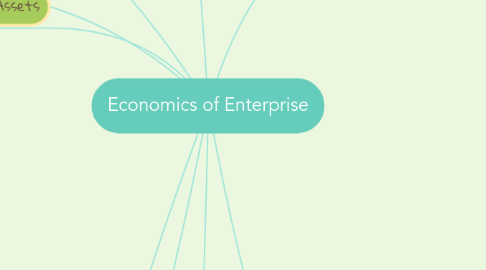
1. Current assets (also called short-term assets, circulating assets, circulating capital, or f loating assets) is any asset which can reasonably be expected to be sold, consumed, or exhausted through the normal operations of a business within the current fiscal year or operating cycle (whichever period is longer).
2. Intangible fixed assets • Without physical properties – commercial value • It is a bit difficult to sell • Donothavesalvagevalue • Cannotbeusedbythefirmas collateral to raise loans • Itincludesgoodwill,trademark, copyright, patent, intellectual property, licensing agreements, brand, blueprint, Internet domains, etc.
3. Typical current assets include: • Cash and cash equivalents, • Short-term investments (marketable securities), • Accounts receivable, • Stock inventory, • Supplies, • Prepaid expenses which will be paid within a year.
4. Results of business activity
4.1. 1.Basic Concepts of Revenue 2. Definition of Profit 3. Break-Even Point 4. Cost-Volume-Profit Relationships 5. Applying CVP Analysis
4.2. Revenue is the total amount of income generated by the sale of goods or services related to the company's primary operations.
4.2.1. Profit describes the financial benefit realized when revenue generated from a business activity exceeds the expenses, costs, and taxes involved in sustaining the activity in question.
4.2.1.1. The break-even point is the point in the volume of activity where the organization’s revenues and expenses are equal.
4.2.1.2. The contribution margin ratio is the difference between a company's sales and variable costs, expressed as a percentage.
4.2.2. Net Profit is the surplus (positive value) remained with the company after deducting all expenses, interest, and taxes.
5. Costs
5.1. 1.Accounting and economic costs. Explicit and implicit costs
5.2. 2. Fixed and variable costs
5.3. 3.Total costs: composition
5.4. 4. Cost of goods sold
6. Fixed assets
6.1. Types of Fixed Assets
6.2. Methods of Asset Valuation:
6.3. 2. Market Value Method
6.4. Tangible fixed assets • Have a physical value – economic value • Suffer the risk of loss due to fire, theft, accident or any other disaster • Haveausefuleconomiclife,after which it becomes obsolete • Arereadilyconvertibleintocashin case emergency • Have salvage value • Areacceptedbythelenderswhile granting a loan to the firm • Itincludesplants&machinery,tools& equipment, furniture & fixtures, building, vehicles, land, computers, etc.
6.5. 1. Cost Method
6.6. 3. Base Stock Method
6.7. 4. Standard Cost Method
7. Current Assets
8. Labor resources of an enterprise
8.1. Labor force of the economy
8.1.1. Labor force — People within the working age who are employed or are unemployed and seeking work (excluding the population in the military, prisons, mental hospitals, and nursing homes).
8.2. Composition and structure of the labor resources of the enterprise
8.2.1. Major human resource management responsibilities: 1. Attracting a quality workforce • Human resource planning, recruitment, and selection Developing a quality workforce • Employee orientation, training and development, and performance appraisal. Maintaining a quality workforce • Career development, work-life balance, compensation and benefits, employee retention and turnover, and labor-management relations.
9. Enterprise in the system of market relations
9.1. An enterprise is a separate production and economic unit, functioning to achieve a goal (usually, for profit)
9.2. Classification of enterprises
9.2.1. By the nature of raw materials consumption
9.2.2. By the nature and purpose of finished products
9.2.3. By the character of refining process
9.2.3.1. a) Enterprises with continuous processes of production b) Enterprises with discontinuous processes of production
9.2.4. By the work time during a year
9.2.5. By degree of specialization
9.2.5.1. a) specialized
9.2.5.2. b) universal
9.2.6. By coverage of various stages of production
9.2.6.1. a) Enterprises with complete cycles of production b) Enterprises with incomplete cycles of production
9.2.7. By type of production
9.2.7.1. a) Mass
9.2.7.2. b) Serial (batch)
9.2.7.3. c) Single (unit)
9.2.8. By degree of mechanization and automation of production
9.2.8.1. a) with automated production
9.2.8.2. b)with mechanized production
9.2.8.3. c)with manual work
9.2.9. By the form of ownership
9.2.9.1. a) With state (public) ownership
9.2.9.2. c) With private ownership
9.2.9.3. b) With collective ownership
9.2.10. By size and scope of activities
9.2.10.1. b) Medium enterprises
9.2.10.1.1. c) Small enterprises
9.2.10.2. a) Large enterprises
9.2.11. By organizational and legal form
9.2.11.1. a) Individual business
9.2.11.2. b) Business associations
